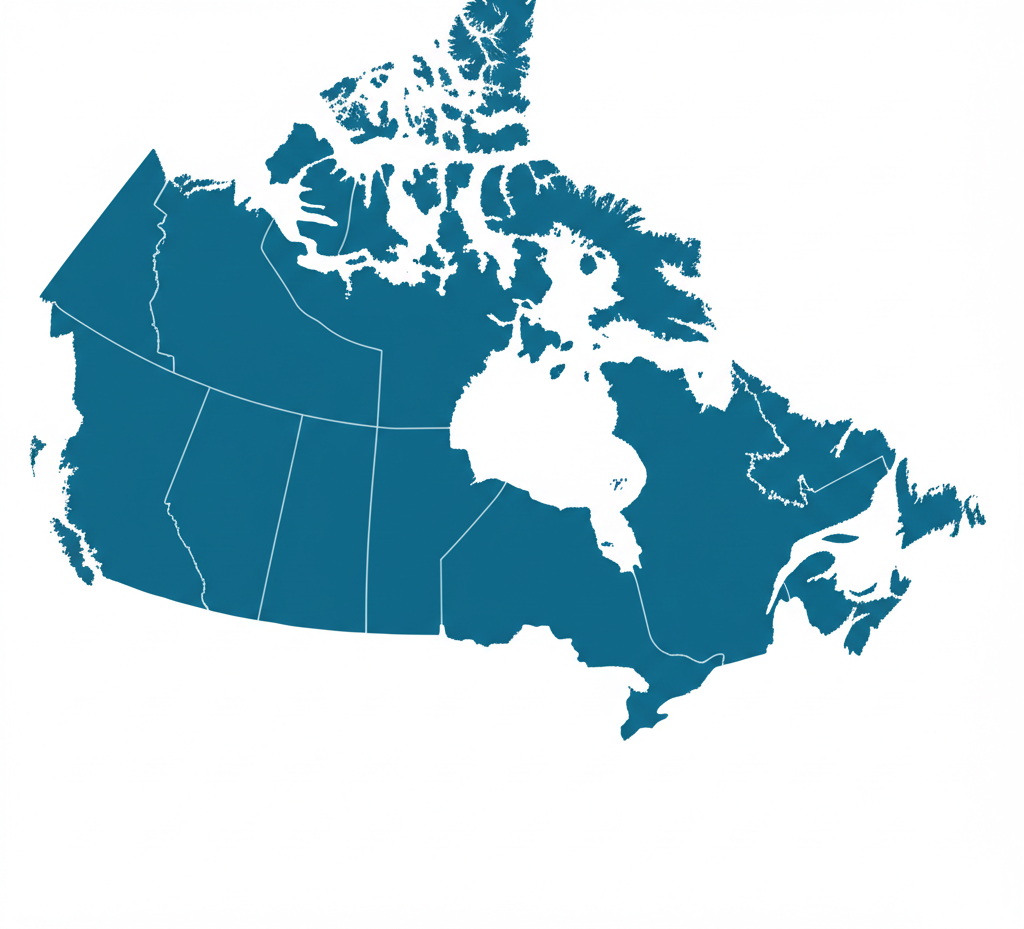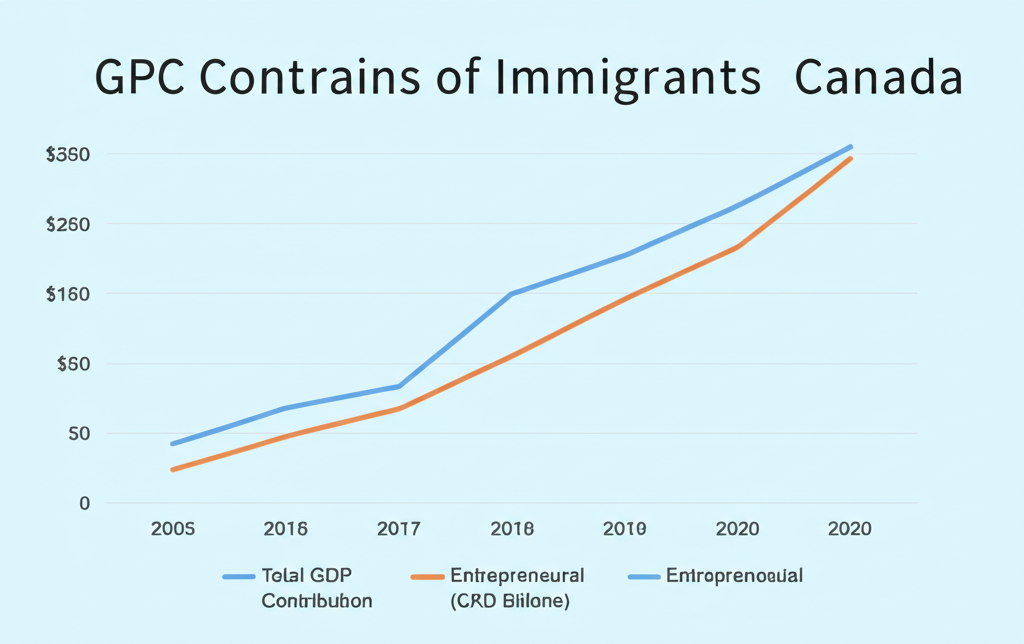Complete Guide to Getting Your Canada Study Permit in 2025

Complete Guide to Getting Your Canada Study Permit in 2025

Canada welcomes over 600,000 international students annually from diverse backgrounds
Introduction: Why Canada for International Students
Canada consistently ranks among the top destinations for international students, renowned for its high-quality education system, welcoming multicultural society, safe environment, and post-graduation work opportunities. Each year, hundreds of thousands of students from around the globe, including major source countries like India, China, Nigeria, the Philippines, Vietnam, and Brazil, choose Canada for their academic pursuits.
According to Immigration, Refugees and Citizenship Canada (IRCC), international student enrollment has grown by over 75% in the past decade, with more than 600,000 international students currently studying in Canadian institutions. This growth reflects Canada's reputation as a premier education destination that offers not just academic excellence, but also pathways to permanent residence and career opportunities.

The Express Entry system is a popular pathway to permanent residence for international students after graduation
This comprehensive 2025 guide provides a detailed walkthrough of the Canadian Study Permit application process. We'll cover eligibility criteria, the importance of choosing a Designated Learning Institution (DLI), the crucial proof of funds requirement (including the Guaranteed Investment Certificate - GIC), the the crucial proof of funds requirement (including the Guaranteed Investment Certificate - GIC), the Student Direct Stream (SDS) for faster processing, biometrics, required documents, applying online, working while studying, the Post-Graduation Work Permit (PGWP), and tips for a successful application.
Understanding the Terminology: Study Permit vs. Student Visa
It's important to clarify the terminology used by Immigration, Refugees and Citizenship Canada (IRCC). A Study Permit is the primary document issued by IRCC that allows foreign nationals to study at Designated Learning Institutions (DLIs) in Canada. It's not a travel document; it authorizes your stay in Canada as a student for a specific period. Depending on your country of citizenship, you may also need either a Temporary Resident Visa (TRV) or an Electronic Travel Authorization (eTA) to enter Canada.
Important: While many people use the terms "Study Permit" and "Student Visa" interchangeably, they are different documents with different purposes. The Study Permit allows you to study in Canada, while the TRV or eTA allows you to enter Canada.
Basic Eligibility Requirements
To be eligible for a Canadian Study Permit, you must:
Primary Requirements
- Acceptance Letter: Have an acceptance letter from a Designated Learning Institution (DLI)
- Financial Proof: Prove you have sufficient funds to pay for tuition fees, living expenses, and return transportation
- Clean Record: Have no criminal record and be willing to provide a police certificate if required
- Good Health: Be in good health and willing to complete a medical examination if required
- Return Intent: Satisfy the visa officer that you will leave Canada at the end of your authorized stay
Additional Considerations
- Language Proficiency: Meet the language requirements of your program (usually demonstrated through IELTS, TOEFL, etc.)
- Academic History: Have a consistent academic record that supports your chosen program of study
- Immigration History: Have a positive travel and immigration history
- Family Ties: Demonstrate strong ties to your home country
- Study Plan: Have a clear and logical study plan that aligns with your career goals
The Application Process: Overview
The application process generally involves:

The journey from acceptance letter to arriving in Canada as an international student
-
Get Your Letter of Acceptance (LOA)
Apply to and receive an acceptance letter from a Designated Learning Institution (DLI) in Canada.
-
Determine Your Application Stream
Decide whether to apply through the regular stream or the Student Direct Stream (SDS) if eligible.
-
Gather Required Documents
Collect all necessary documentation, including proof of financial support.
-
Apply Online
Create an account on the IRCC website and submit your application electronically.
-
Pay Fees
Pay the application processing fee ($150 CAD) and biometrics fee ($85 CAD) if applicable.
-
Provide Biometrics
Visit a Visa Application Centre (VAC) to provide your fingerprints and photo.
-
Wait for Processing
Processing times vary by country and application type (regular vs. SDS).
-
Receive Decision
If approved, you'll receive a Port of Entry (POE) Letter of Introduction.
-
Travel to Canada
Present your documents at the Canadian border to receive your Study Permit.
Essential Documents for Your Application
Required documents typically include:
Primary Documents
- Letter of Acceptance from a DLI
- Valid passport
- Proof of financial support
- Letter of Explanation (SOP)
- Digital photo
Additional Documents
- Medical examination results (if required)
- Police certificates (if required)
- Language test results (especially for SDS)
- Academic transcripts
- Certificat d'acceptation du Québec (CAQ) if studying in Quebec
Financial Documents
- GIC certificate (for SDS applications)
- Bank statements (past 4-6 months)
- Tuition fee payment receipts
- Scholarship/sponsorship letters
- Income tax returns/employment letters (for sponsors)
Demonstrating Sufficient Financial Resources
Demonstrating sufficient funds is one of the most critical aspects of the application. You need to prove you can cover your first year's tuition PLUS living expenses PLUS travel costs.
| Expense Category | Minimum Requirement (2025) | Notes |
|---|---|---|
| Tuition Fees | First year's tuition | As specified in your acceptance letter |
| Living Expenses | $20,635 CAD for single student | Additional $4,000 CAD per dependent |
| Travel Costs | Varies by location | Return airfare for yourself and any accompanying family members |
Important Update for 2025: The minimum living expenses requirement has increased significantly from previous years. Always verify the exact current amount on the official IRCC website.
The Student Direct Stream (SDS): Fast-Track Processing
The Student Direct Stream (SDS) offers expedited processing for applicants from specific countries who meet additional requirements:
Eligible Countries (2025)
- Antigua and Barbuda
- Brazil
- China
- Colombia
- Costa Rica
- India
- Morocco
- Pakistan
- Peru
- Philippines
- Senegal
- Saint Vincent and the Grenadines
- Trinidad and Tobago
- Vietnam
SDS Requirements
- Language Proficiency: IELTS Academic with minimum 6.0 in each skill
- GIC Requirement: Purchase a Guaranteed Investment Certificate (GIC) of $20,635 CAD from an approved financial institution
- Tuition Payment: Proof of payment for first year's tuition
- Acceptance Letter: Letter of Acceptance from a DLI
- Education: Completed and upfront medical exam (if applicable)

Different Canadian provinces offer various immigration pathways for international students after graduation
After Submission: Next Steps
After submission, you'll need to:
Biometrics
Most applicants need to provide biometrics (fingerprints and photo) at a Visa Application Centre (VAC).
- You'll receive a biometrics instruction letter after submitting your application
- You must provide biometrics within 30 days
- The fee is $85 CAD
- Biometrics are valid for 10 years
Processing Times
Processing times vary significantly:
- SDS Applications: Usually processed within 20 calendar days
- Regular Applications: Can take 4-16 weeks depending on the country
- Check Current Times: Always check the IRCC processing times tool
Approval and Arrival in Canada
If approved, you'll receive a Port of Entry (POE) Letter of Introduction. When you arrive in Canada, a Border Services Officer will verify your documents and issue your official Study Permit.
Documents to Bring to Canada
- POE Letter of Introduction
- Valid passport
- Letter of Acceptance from your DLI
- Proof of financial resources
- Any additional documents mentioned in your approval letter
At the Port of Entry
- Be prepared for questions about your study plans
- Answer truthfully and confidently
- Verify your Study Permit details before leaving the immigration area
- Ensure your permit has the correct:
- Personal information
- DLI name and location
- Program of study
- Expiry date
- Work authorization conditions
Working While Studying in Canada
One of Canada's major attractions is the ability to work during and after studies:

International students contribute significantly to the Canadian economy through tuition and employment
On-Campus Work
- No work permit required
- No hour restrictions
- Must be a full-time student
- Limited to your institution's campus
Off-Campus Work
- Up to 20 hours per week during academic sessions
- Full-time during scheduled breaks
- Must be a full-time student
- Must have started your study program
- Work authorization must be noted on your study permit
Co-op/Internship
- Requires a co-op work permit
- Work must be essential part of your program
- Cannot exceed 50% of your program
- Need letter from your institution confirming all students must complete work placement
Post-Graduation Work Permit (PGWP)
After graduation, you may be eligible for a Post-Graduation Work Permit (PGWP), which allows you to gain valuable Canadian work experience that can significantly help in qualifying for permanent residence pathways.
PGWP Eligibility
- Graduated from an eligible DLI
- Completed a program of at least 8 months
- Maintained full-time student status in Canada during each academic session
- Received a transcript and official letter confirming program completion
- Applied within 180 days of receiving final marks
- Had a valid study permit or were eligible to work off-campus without a permit
PGWP Duration
- Programs 8 months to less than 2 years: PGWP equal to program length
- Programs 2 years or more: 3-year PGWP
- Multiple programs: May be eligible for PGWP based on cumulative duration
Note: The PGWP is a one-time opportunity. You cannot get a second PGWP even if you complete another program.
Pathway to Permanent Residence: The Canadian work experience gained through the PGWP can make you eligible for immigration programs like Express Entry (Canadian Experience Class), Provincial Nominee Programs, and other pathways to permanent residence.
Maintaining Your Status in Canada
Once in Canada, you must:
Academic Requirements
- Remain enrolled at your DLI
- Make progress towards completing your program
- Respect any conditions on your study permit
- Inform IRCC if you change DLIs
Legal Requirements
- Renew your study permit before it expires if needed
- Apply for a work permit if required for co-op/internship
- Maintain valid health insurance
- Leave Canada by the end of your authorized stay unless you apply to extend or change your status
Conclusion: Your Canadian Education Journey
Securing a Canadian Study Permit requires diligence, thorough documentation, and meeting specific eligibility criteria. With careful planning and understanding of the requirements for your specific situation, you can successfully obtain your permit and embark on your educational journey in Canada.

For many international students, studying in Canada is the first step toward permanent residence and eventual citizenship
Key Takeaways
- Apply early to account for processing times and potential delays
- Ensure you meet all financial requirements and can demonstrate sufficient funds
- Consider the SDS program if you're from an eligible country
- Prepare a strong Letter of Explanation that connects your study plan to your career goals
- Take advantage of work opportunities during and after your studies
- Maintain your status by following all conditions of your study permit
- Plan ahead for post-graduation pathways, including the PGWP and potential permanent residence options
For the most current information, always refer to the official IRCC website and the website of the Canadian visa office in your country.
Need Help With Your Study Permit Documents?
Our document generation tools can help you create professional documents for your Canadian Study Permit application.
Generate Bank Statements Create Invitation LettersLast updated: March 10, 2025 | This guide reflects the most current Canadian immigration policies and procedures.
Need Help With Your Visa Documents?
Our document generation tools can help you create professional visa application documents quickly and accurately.